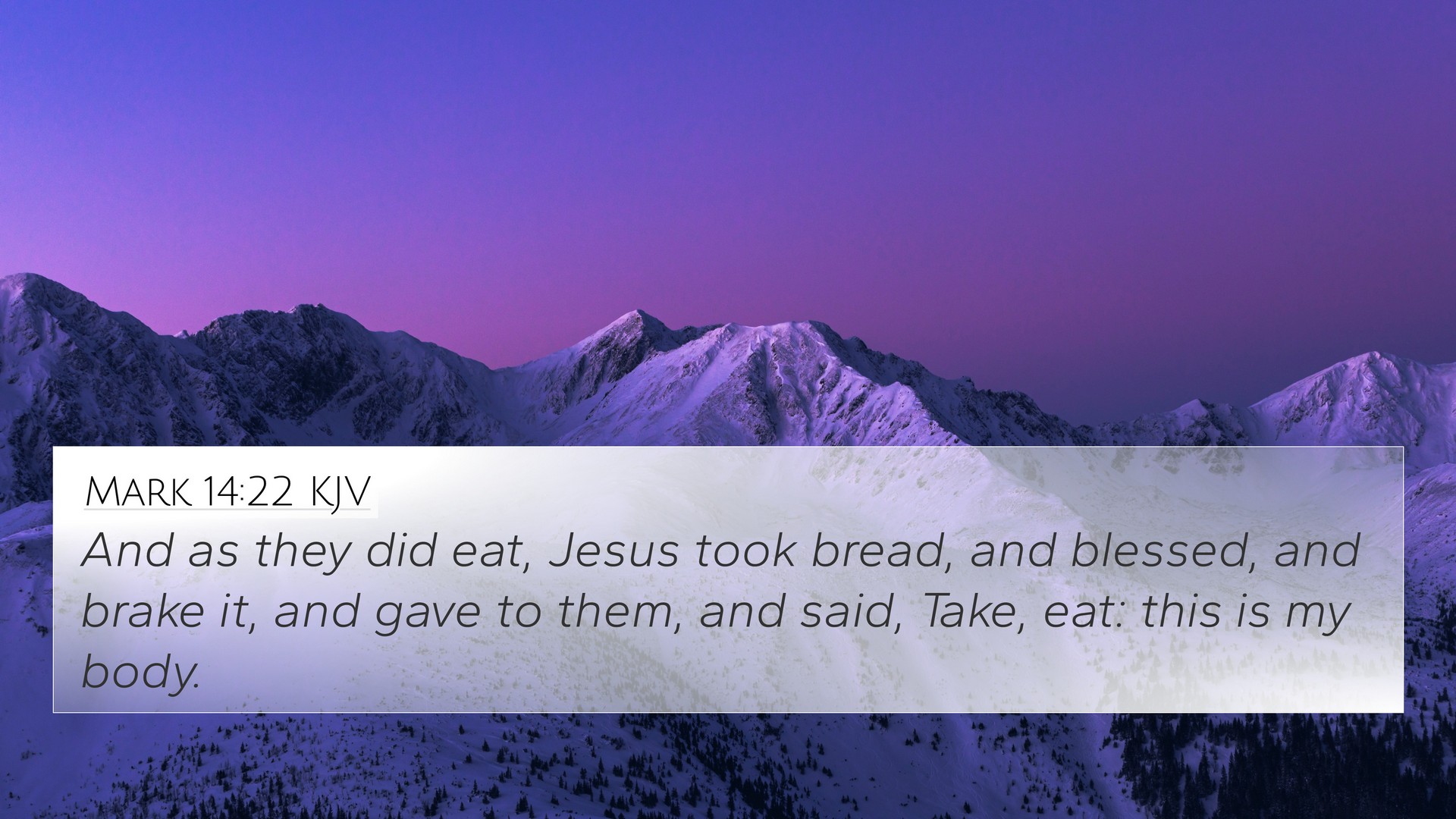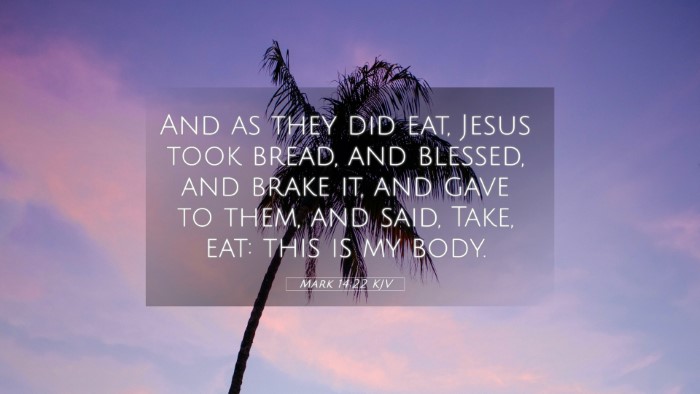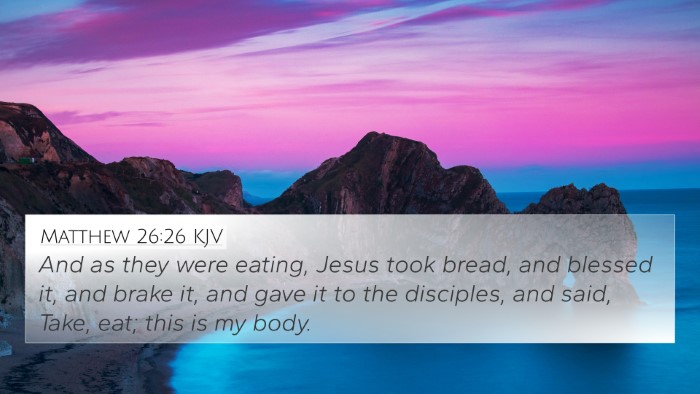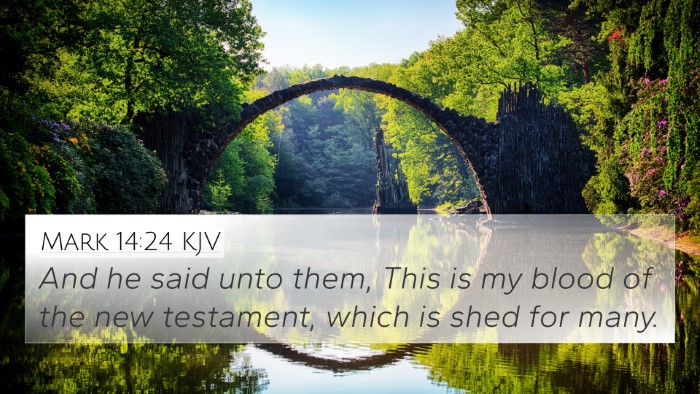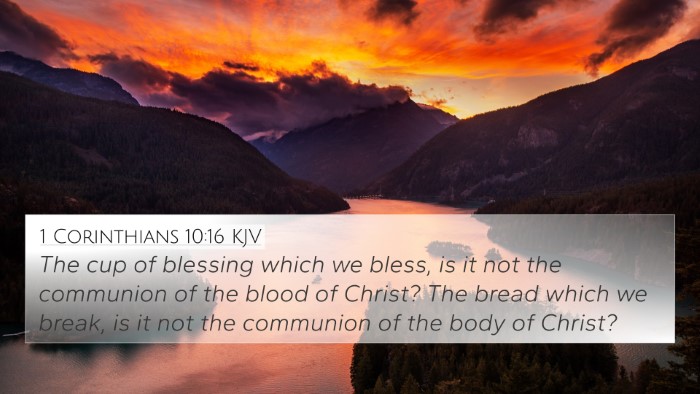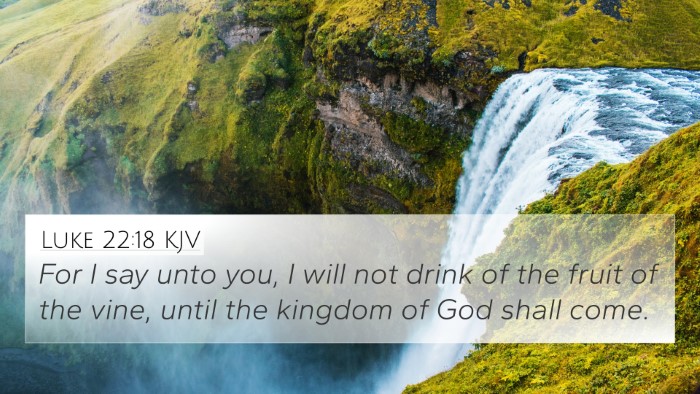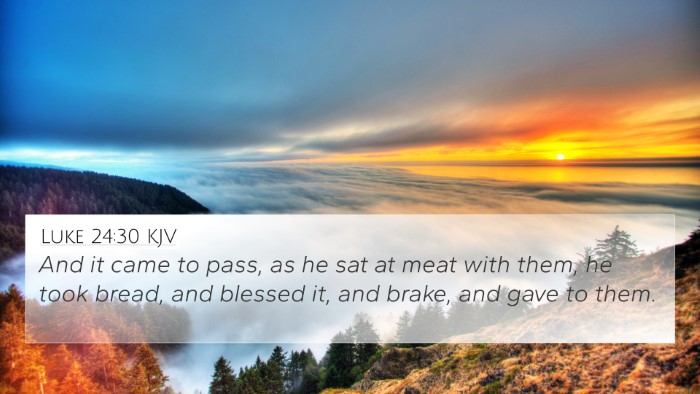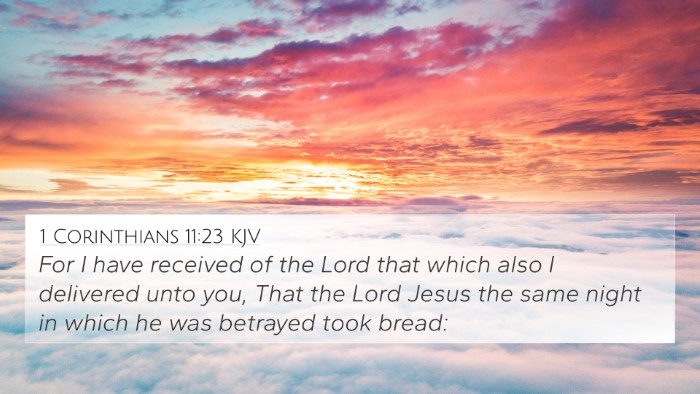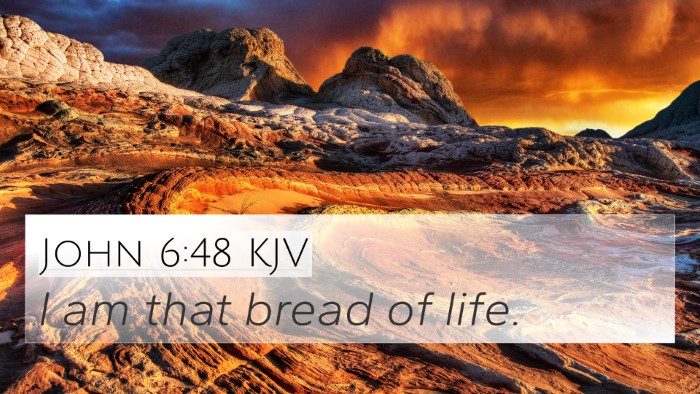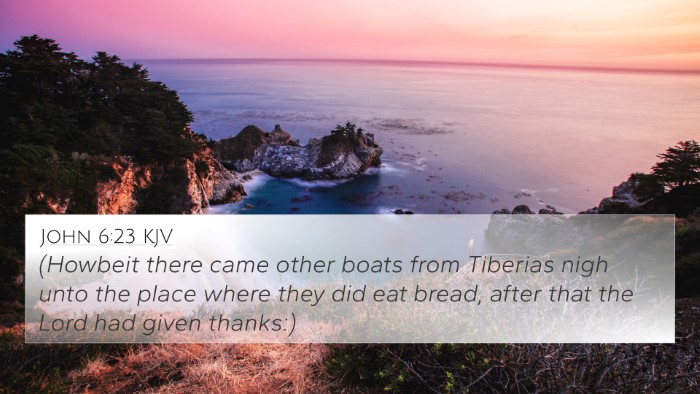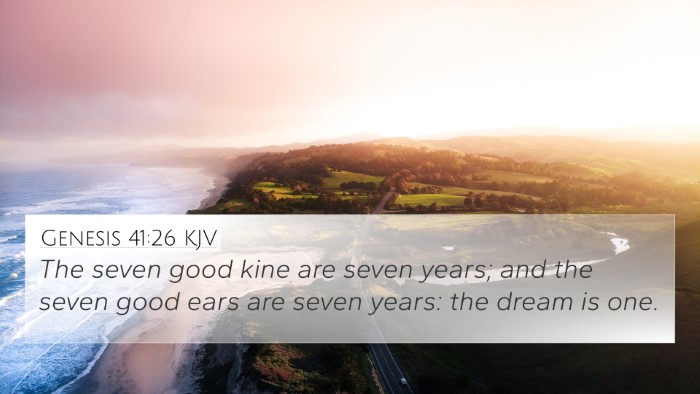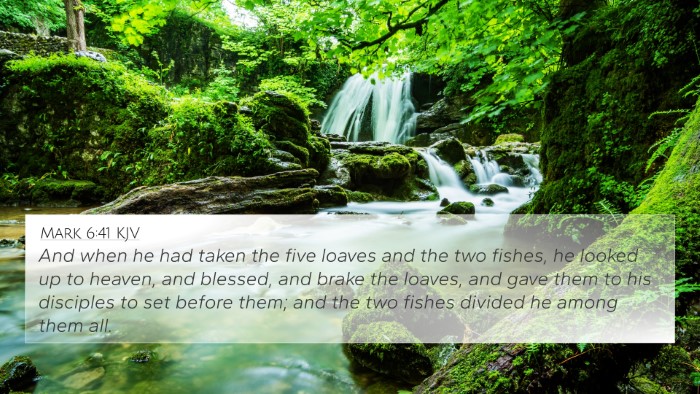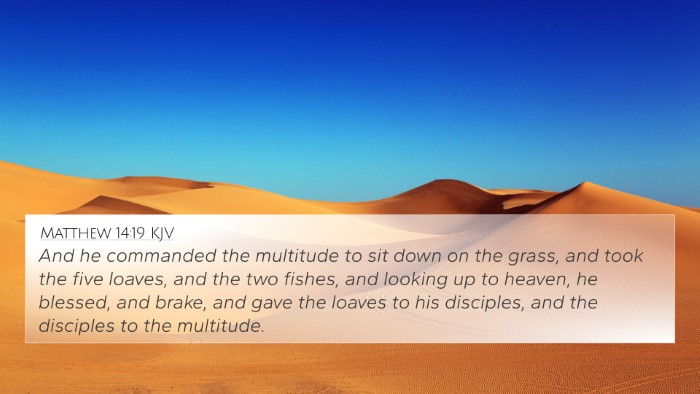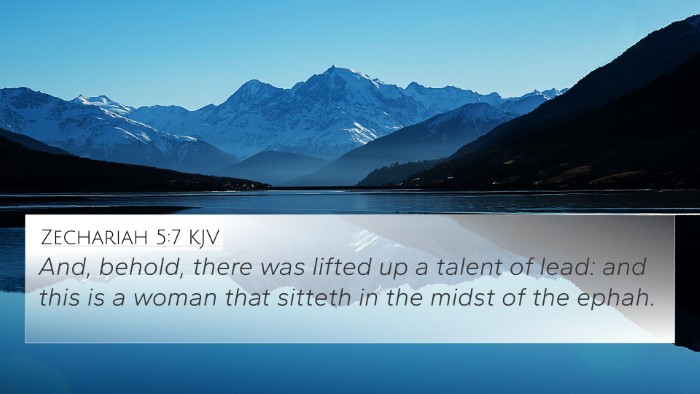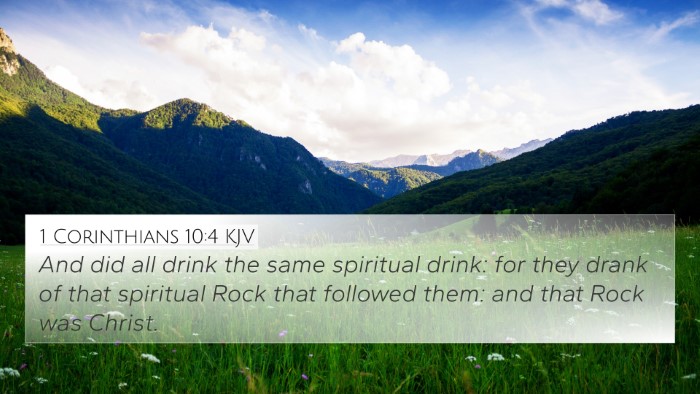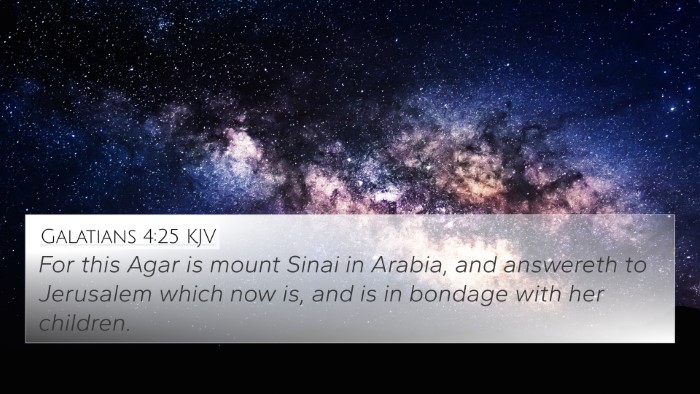Understanding Mark 14:22
Mark 14:22 recounts the moment during the Last Supper when Jesus shared bread and wine with His disciples, symbolizing the covenant between God and humanity through His impending sacrifice. This pivotal moment is rich in meaning and serves as a foundation for Christian sacramental theology.
Verse Context
In this context, Jesus is preparing to face crucifixion. He uses the act of sharing bread and wine to signify His body and blood, establishing the practice of communion that reflects both remembrance and participatory faith.
Commentary Insights
Matthew Henry's Commentary
Matthew Henry emphasizes the significance of the bread and wine as symbols of Christ's body and blood. He highlights how these elements represent not just physical sustenance but spiritual nourishment for believers, crucial for their faith journey.
Albert Barnes' Commentary
Barnes notes the establishment of a new covenant through Jesus' sacrifice. He stresses that Jesus' words were intended to convey the seriousness of this covenant and to prepare the disciples for the coming events. This moment is seen as a profound act of love, showcasing Jesus’ intent to redeem humanity.
Adam Clarke's Commentary
Clarke provides insights into the significance of the Last Supper. He discusses the Jewish Passover context and how Jesus reinterprets this traditional meal, instituting a new observance that commemorates His sacrifice. He views this moment as a radical shift in the understanding of God’s relationship with humanity.
Theological Implications
Mark 14:22 serves multiple theological purposes:
- Covenant Establishment: The initiation of a new covenant is central to Christian belief, highlighting God’s ongoing relationship with humanity.
- Symbolism of Sacrifice: The bread and wine symbolize Jesus’ imminent passion, offering profound insights into atonement and reconciliation with God.
- Call to Remembrance: The act of communion is not merely a ritual; it serves as an invitation to remember Christ’s sacrifice and its implications for the believer’s life.
Bible Verse Cross-References
Mark 14:22 is intricately connected with several other scripture passages, which enrich the understanding of this verse:
- Matthew 26:26-29: A parallel account of the Last Supper emphasizing the same themes of the bread and wine as Jesus’ body and blood.
- Luke 22:19-20: Similar to Matthew, providing further context to the institution of the Eucharist.
- 1 Corinthians 11:23-26: Paul’s recounting of the Last Supper and explanation of communion as a proclamation of Christ's death.
- Exodus 12:1-14: The Passover, representing the historical background of the Last Supper.
- John 6:51: Jesus describes Himself as the living bread, accentuating the spiritual nourishment theme.
- Hebrews 9:14: Discusses the significance of Christ's sacrifice in the context of purification and covenant.
- Isaiah 53:5: Prophecy concerning the suffering servant, linking to the sacrificial theme of Jesus’ body and blood.
Cross-Referencing Biblical Texts
Understanding Mark 14:22 and its significance involves recognizing connections between Bible verses. Here are some insights on thematic Bible verse connections:
- Sacrifice and Redemption: This theme appears throughout the Bible, linking the Passover lamb to Jesus as the ultimate sacrifice.
- New Covenant Theology: The New Testament's view of covenant redefines the ancient texts and prophecies, reshaping the understanding of God’s relationship with man.
Conclusion
Mark 14:22 is a pivotal scripture that encapsulates critical aspects of Christian faith. It marks the transition into a new covenant relationship through sacrificial love, inviting believers into a deeper understanding of communion. This verse serves as a cornerstone for theological reflection and practical application, bridging connections across biblical texts.
